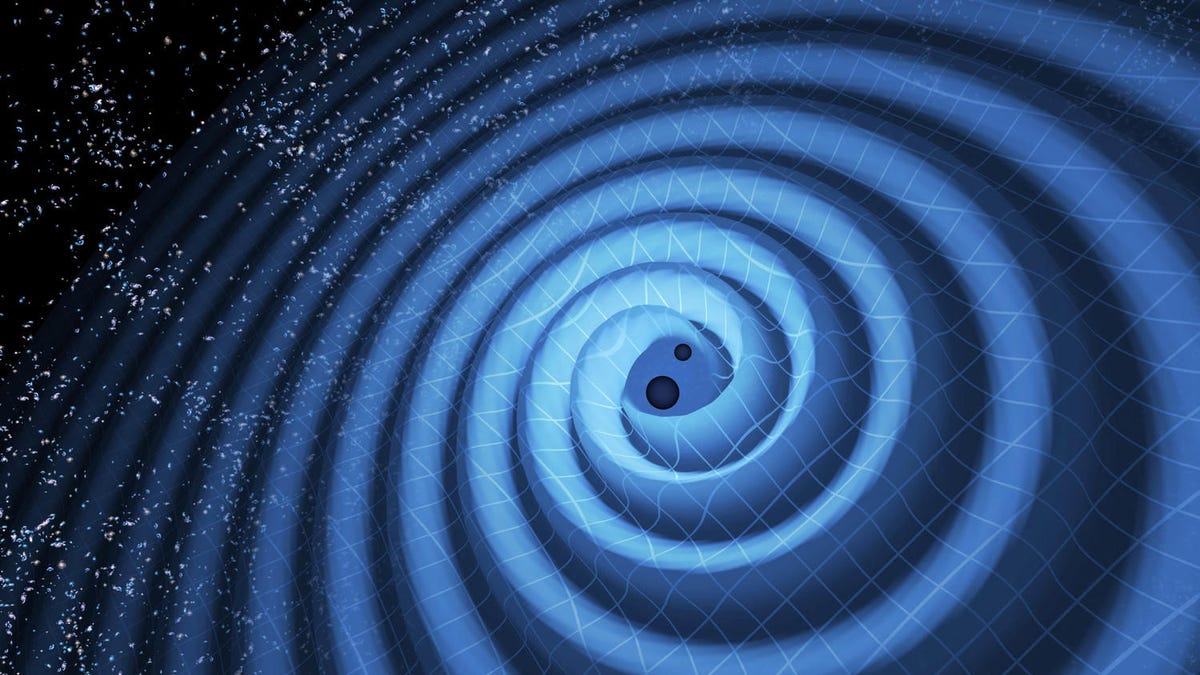An 'unknown' burst of gravitational waves just lit up Earth's detectors
Don't worry, Betelguese is still there.

Ripples in space-time.
Earth's gravitational wave observatories -- which hunt for ripples in the fabric of space-time -- just picked up something weird. The Laser Interferometer Gravitational-Wave Observatory (LIGO) and Virgo detectors recorded an unknown or unanticipated "burst" of gravitational waves on Jan. 14.
The gravitational waves we've detected so far usually relate to extreme cosmic events, like two black holes colliding or neutron stars finally merging after being caught in a death spiral. Burst gravitational waves have not been detected before and scientists hypothesize they may be linked to phenomena such as supernova or gamma ray bursts, producing a tiny "pop" when detected by the observatories.
This unanticipated burst has been dubbed, for now, S200114f, and was detected by the software that helped confirm the first detection of gravitational waves.
Working backward, astronomers have been able to pinpoint where the burst came from -- and many astronomy buffs on Twitter began wondering about the fate of a nearby red giant star, Betelgeuse. Recent analysis has shown Betelgeuse is acting weird and astronomers speculated it could be on the verge of a magnificent explosion. Such an explosion has been predicted to potentially trigger a gravitational wave burst.
Fortunately for Betelgeuse (and unfortunately for anyone wanting to see a star explode), the red giant is safe, according to Andy Howell, an astronomer at Las Cumbres Observatory.
It isn't Betelgeuse blowing up because:
— Andy Howell (@d_a_howell) January 14, 2020
- It is outside the GW localization region.
- The burst might not even be real.
- The burst was probably too short.
- No neutrinos were detected
- Betelgeuse's dimming is well explained.
Me walking outside to check = buying a lottery ticket
Astronomers have already swung their telescopes to the interesting portion of the sky, listening in across different wavelengths of the electromagnetic spectrum for a whisper of what might have occurred.
However, the gravitational wave detectors do sometimes detect false positives -- and the error rate of this particular detection is one every 25.8 years, which is rather high for a LIGO signal. That means the burst could be nothing at all, and we'll make sure to update this piece should that be the case, but for now we can be safe in the knowledge that we're taking a closer look, Betelgeuse is safe and we may have detected something completely new! Cool!

